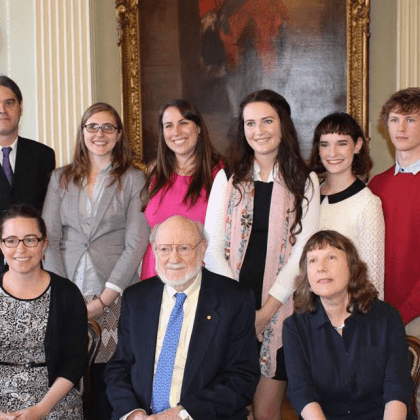William Petty’s survey of Ireland and the role of natural history in the development of statistics
William Petty (1623-1687) is well known as a pioneer of political economy and statistics. He has been often celebrated as an ingenious thinker who was among the first to grasp that certain information, like data on different categories of landowners or the number of births and deaths, could be used to describe trends and tendencies occurring on the level of what he called the ‘political body’ – or what we would nowadays call ‘population phenomena’. The problem of this historical narrative is that Petty’s different manner of seeing and processing data is portrayed as a mental shift, largely detached from both the social relations in which he worked and the ‘scientific’ practices of his time.
This article re-examines Petty’s employment as manager of the Down Survey, a cadastral and topographic survey of Ireland undertaken in 1655 to enable the dispossession of Irish inhabitants in the wake of the Cromwellian conquest. The example of the Down Survey, I argue, shows that Petty first came to the idea of seeing and analysing a territory as an aggregate of natural and politico-economic data because of the techniques he adopted from natural history to organise surveying work.
Division of labour and questionnaires
Under the influence of Francis Bacon, the description of trades and artisanal work had become a central branch of natural history. Petty and many of his contemporaries engaged in studies of various crafts, professions and mechanical arts, such as cloth-production, husbandry and mining. Petty extended this analytic approach to the management of the Down Survey. He broke down the entire art of land measurement into individual operations and elementary task that he entrusted to different detail labourers, which he called ‘my instruments’. This allowed him to employ demobilized Cromwellian soldiers instead of professional surveyors.
Besides this precocious form of Taylorism, Petty also borrowed from natural history the use of questionnaires to collect, standardize and organize the reports of his specialized workers. Petty issued to ‘his instruments’ a list of items which they were to record, like ‘navigable rivers’ and ‘the height of all notorious high hills and mountains’. These instructions had a crucial epistemic function. On the one hand, they calibrated the surveyors’ perception to observe and record certain phenomena (like rivers), while ignoring others (for example the weather). On the other hand, they also structured Petty’s perception. As a supervisor sitting in a Dublin office, Petty experienced Irish territory only vicariously, as an abstract space depicted on maps and defined by data and summary descriptions returned by his instruments. The division of work, which he had imposed, thus prompted him to think about Ireland in terms of total size of land, its sum value and representative groups of landowners.

Territorial natural history
The second half of the article shows that Petty’s Down Survey is typical of a particular contemporary tradition of natural history, which may be called territorial natural history. This tradition can be distinguished from other styles of natural history because it focused on recording the features of a bounded administrative region or the ‘state of a country’, as contemporary authors and Petty himself would often describe their research object. Examples include the early Royal Society’s questionnaires on ‘foreign countries’ or John Graunt’s Observations on the Bills of Mortality, often seen as a founding treatise of demography. As opposed to Bacon, for instance, for whom natural history represented a ‘worldwide perambulation’ of ‘Phaenomena of the Universe’, these researchers restricted their surveys to phenomena located within a bounded administrative unit – Jamaica, Ireland, London. By the end of the eighteenth century, territorial natural history seamlessly transitioned into statistics with John Sinclair’s Statistical Account of Scotland. Sinclair simply decided to adorn the old practice of inquirying ‘into the state of a country’ with a more fashionable neologism – ‘statistics’ – which he happened upon during his travels in Germany and borrowed in the hope ‘that a new word might attract more public attention’.
Petty’s instruments: the Down Survey, territorial natural history and the birth of statistics by Svit Komel





